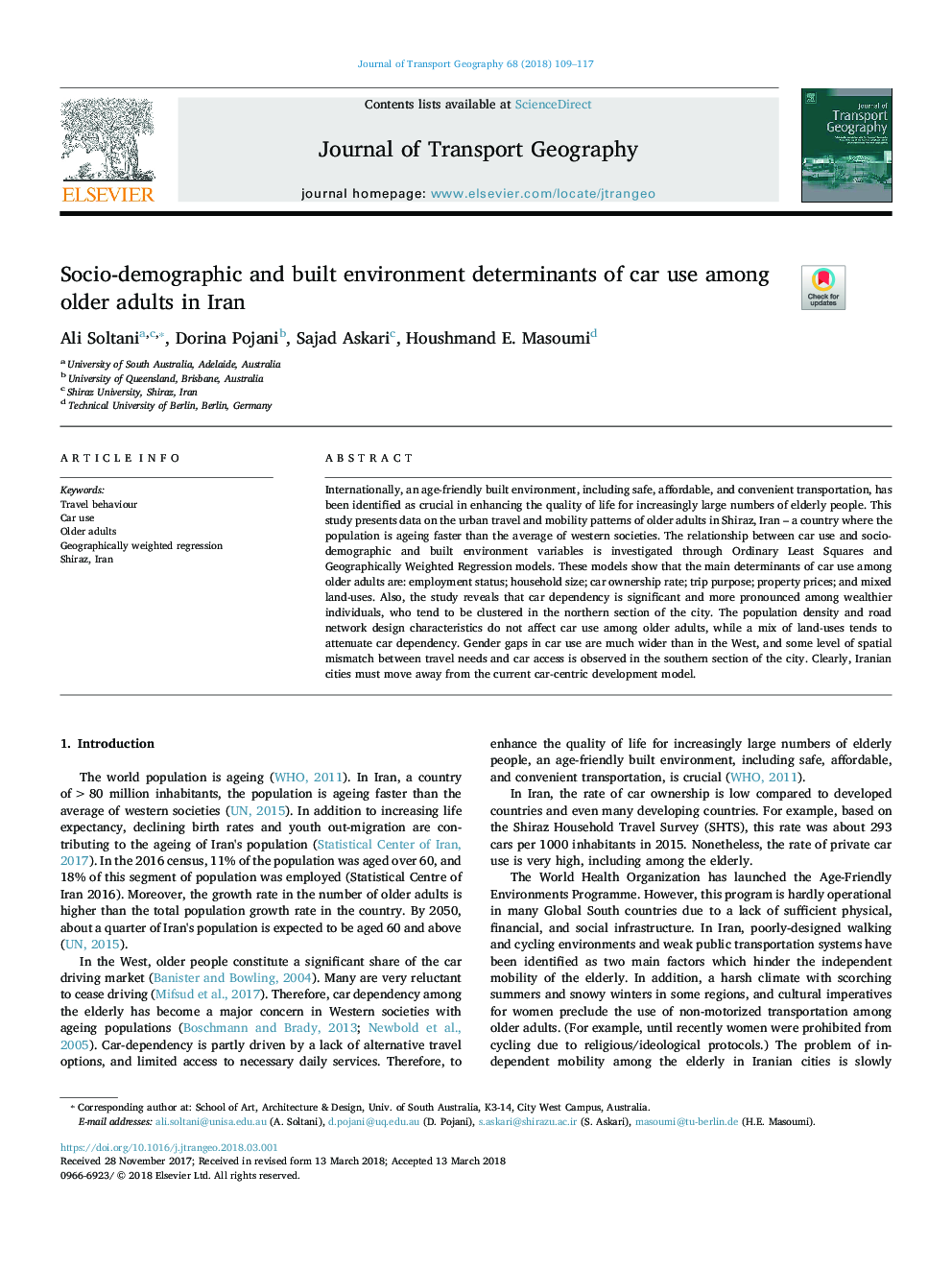| Article ID | Journal | Published Year | Pages | File Type |
|---|---|---|---|---|
| 7485070 | Journal of Transport Geography | 2018 | 9 Pages |
Abstract
Internationally, an age-friendly built environment, including safe, affordable, and convenient transportation, has been identified as crucial in enhancing the quality of life for increasingly large numbers of elderly people. This study presents data on the urban travel and mobility patterns of older adults in Shiraz, Iran - a country where the population is ageing faster than the average of western societies. The relationship between car use and socio-demographic and built environment variables is investigated through Ordinary Least Squares and Geographically Weighted Regression models. These models show that the main determinants of car use among older adults are: employment status; household size; car ownership rate; trip purpose; property prices; and mixed land-uses. Also, the study reveals that car dependency is significant and more pronounced among wealthier individuals, who tend to be clustered in the northern section of the city. The population density and road network design characteristics do not affect car use among older adults, while a mix of land-uses tends to attenuate car dependency. Gender gaps in car use are much wider than in the West, and some level of spatial mismatch between travel needs and car access is observed in the southern section of the city. Clearly, Iranian cities must move away from the current car-centric development model.
Related Topics
Life Sciences
Environmental Science
Environmental Science (General)
Authors
Ali Soltani, Dorina Pojani, Sajad Askari, Houshmand E. Masoumi,
